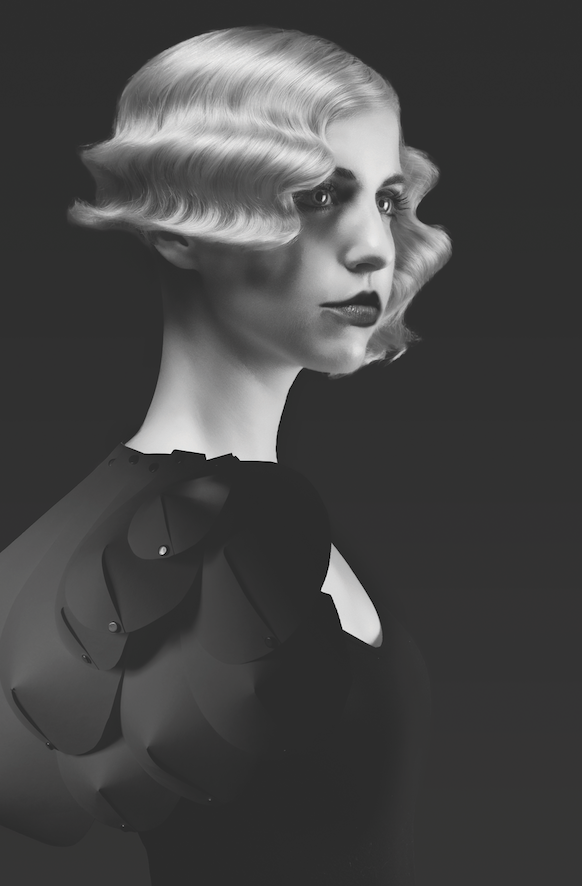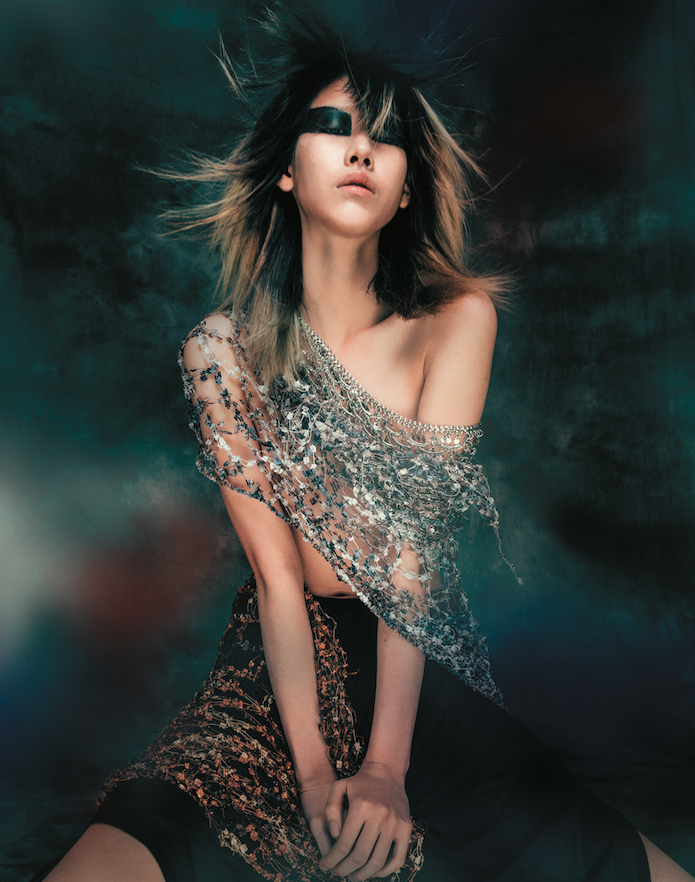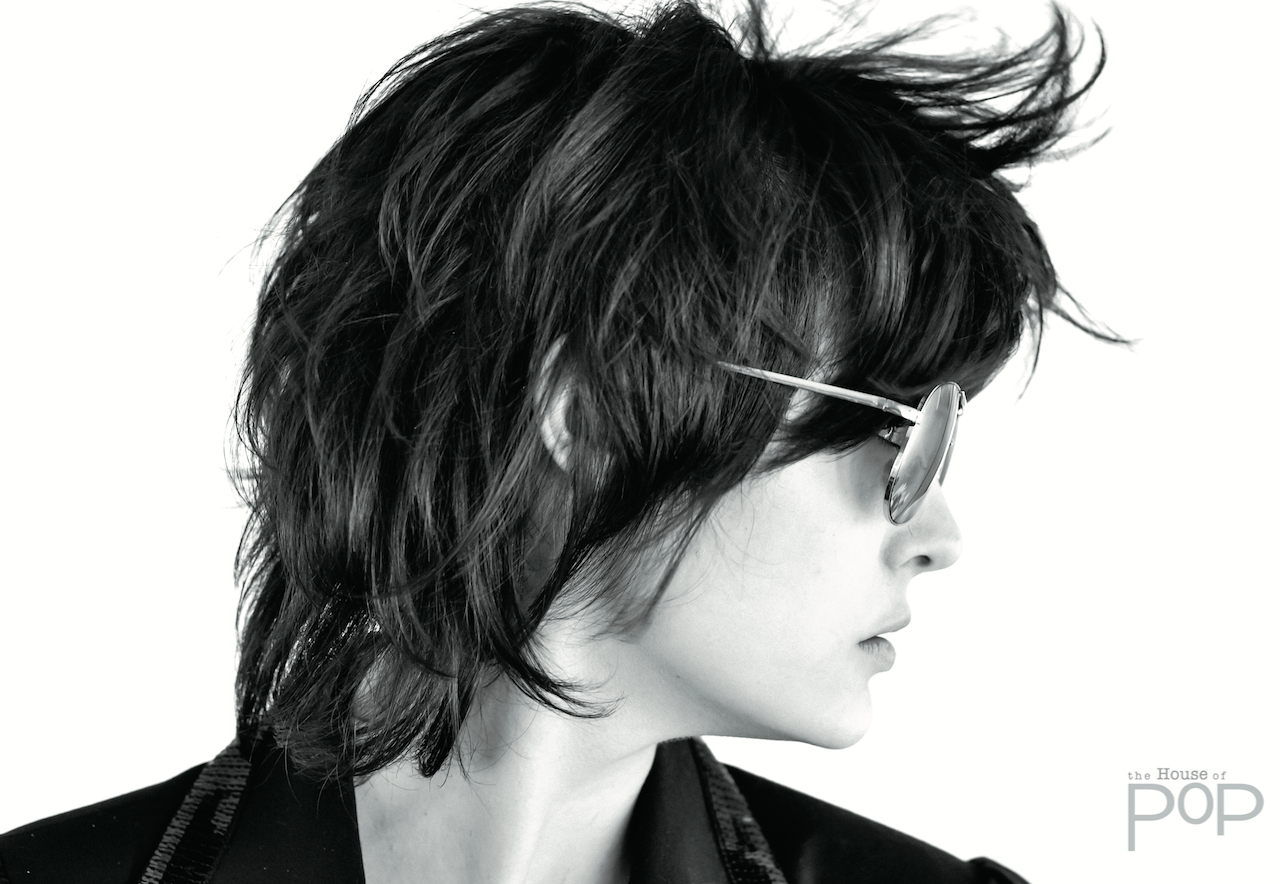Damien Carney relocated to New York City three years ago after a long time in Los Angeles. What he likes about Manhattan is that he can roll out of bed, grab his camera, find a model and do an impromptu photo shoot. Carney began photographing his own work about six years ago when he realized that the high-end fashion photographers he knew saw no benefit in working with him on projects that he found interesting as a hairdresser. “The reality is that the kind of hair that inspires hairdressers is of no interest to them,” he says.
“They’re looking at hair in a different way—it’s all about balance and proportion.” For Carney, photography allows him to search for beauty through art. We asked him to share some images from a new collection that explores the dimensions of texture and shine. The photos, he says, have no commercial value. He simply asked makeup artist Aya Kudo to collaborate with him to create something they could put in their portfolios, an exercise that can be liberating for any creative person because there are no parameters, no rules, no client to please. “I used hair the way a sculptor would use clay,” says Carney, who let his instincts guide him. “I wondered what would happen if I used an iron to mangle nylon hair. How would that change the texture and shape of it?” says Carney, who tries not to let fear limit him. “Fear is the one thing that stops people in their tracks. I’m old enough now that I’m not afraid to experiment. If I get a kick out of it, I’m happy. I don’t care what other people think.”
What happens when hairdressers decide to pick up a camera and photograph their own work? We asked a few of them who are following in the footsteps of the greats, from David Raccuglia to Damien Carney.
Fumi Eguchi
Fumi Eguchi is the Creative Director at Lunatic Fringe Salon in Salt Lake City, MO. He began photographing his own work in 2006 and never looked back. “It allows me to work on my model at my own pace, and it gives me more time to think things through and really create something extraordinary,” he says. “Originally I started shooting my own work because I found it hard to completely portray my vision when I used a photographer.” Eguchi has become so proficient that his work is attracting the attention of major companies. He’s not only photographed the Goldwell ColorZoom entries and the Wella Trend Vision entries, but GAMOU, one of the largest distributors of beauty supplies in Japan, hired him to photograph the Japanese Hairdressing Award entries.
Saeho Kim
Saeho Kim lives in Seoul, South Korea, but you’re probably familiar with his work, which has been posted on Hairbrained.me. “Photography has been in my life since childhood,” says Kim, who has been documenting his own work since 1997. “When I see an object—a person, the hair—in a square frame, it helps me to see the shape and configuration in a different way.” The whole process of creating that final image—the model, the clothing, the accessories, even the music in the studio—fuels his creativity in a way that almost nothing else does.
Douglas McCoy
When Doug McCoy, who owns House of POp in Spokane, WA, worked for Bumble and bumble in the mid-‘90s, he made like a sponge and soaked up everything he could from working with the brilliant Howard McLaren, who told him to “document everything.” McCoy points out that this was long before Facebook and Instagram, and most of what he shot was on his lo-tech phone. Still, he did what he was told. When he started working at Fashion Week in New York City, he got a taste of what editorial work could be. “I started working with photographers in my area—the good, the bad, basically anyone who would shoot with me,” says McCoy, who watched closely and picked up pointers. “It was probably the best training I could have had.” When a photographer friend gave McCoy an old camera—a Nikon D90—he was hooked and gradually developed a style of his own. “I don’t just focus on the hair,” he says. “I’m taking photos of the guy or the girl. The whole thing—the photography, the hair, the model—it’s an emotion.” McCoy has always been a fan of old photographs, like Polaroids, so for awhile he tried to make all of his photos look like something you’d see in your grandmother’s photo album. “I don’t do much of that anymore. Right now I’m into black-and-white, very contrasty photographs.” For the record, while he still takes photos on his iPhone because it’s handy, McCoy’s camera of choice these days is a Nikon D610. He’s also coaching his staff on how to use their phones to capture images, how to edit them and how to find the best light. Because, you know, there's Facebook and Instagram now.


